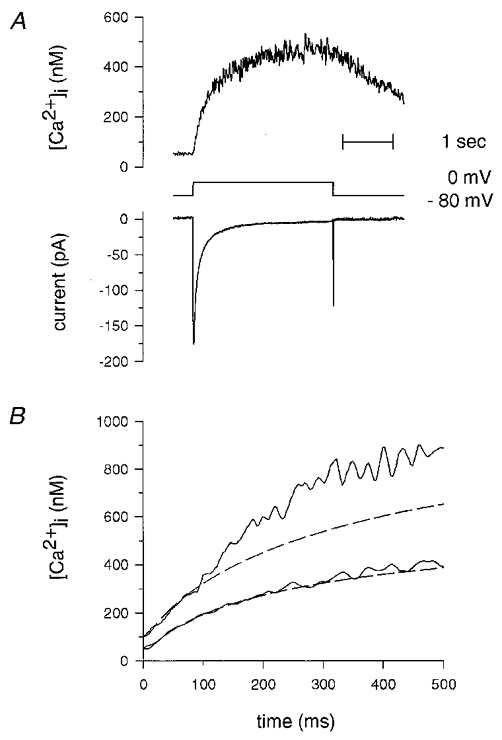Figure 6. The contribution of Ca2+ stores to the rise in [Ca2+]i due to whole-cell Ca2+ currents occurs with a delay and is smaller than for stretch-activated channel currents.

A, typical [Ca2+]i changes (upper trace) due to membrane depolarization to 0 mV from a holding potential of −80 mV (middle trace). The net inward current (lower trace) was obtained by subtracting the current obtained in the presence of 100 μM CdCl2 using the same voltage-clamp protocol. The experiment was carried out using the FDWM and simultaneous standard whole-cell current recording with CsCl in the pipette solution (see Guerrero et al. 1994c). A similar set of traces, but with 100 μM ryanodine in the pipette can be found in Fig. 1 of Guerrero et al. (1994c). B, assuming all of the inward current was carried by Ca2+, the ratio of the increase in [Ca2+]i to the integral of the Ca2+ current (slope, in nm pC−1) was obtained as described in the Methods section during the first 100 ms after the onset of depolarization from −80 mV to 0 mV. The integral of the Ca2+ current as a function of time was multiplied by its corresponding ratio (and added to the resting [Ca2+]i) to predict the resulting [Ca2+]i due to Ca2+ influx through voltage-gated Ca2+ channels for the time between 100 and 500 ms, and is plotted as dashed lines. The continuous lines show the actual [Ca2+]i measured with fura-2 using the FDWM. When ryanodine was present in the pipette solution, the inward current (and the slope, in nm pC−1, obtained during the first 100 ms) could predict the change in [Ca2+]i (lower set of traces). However, in the absence of ryanodine, the change in [Ca2+]i is higher than that predicted by the inward current (upper set of traces), in this case by 26 %. Representative traces are shown from two different cells with very similar slopes for the initial 100 ms after depolarization: 12.2 nm pC−1 in the presence (lower set of traces) and 13.1 nm pC−1 in the absence (upper set of traces) of ryanodine. The contribution of stores to the rise in [Ca2+]i due to Ca2+ currents appears to be proportionately less than that obtained with stretch-activated channel currents (compare with Fig. 5C).
